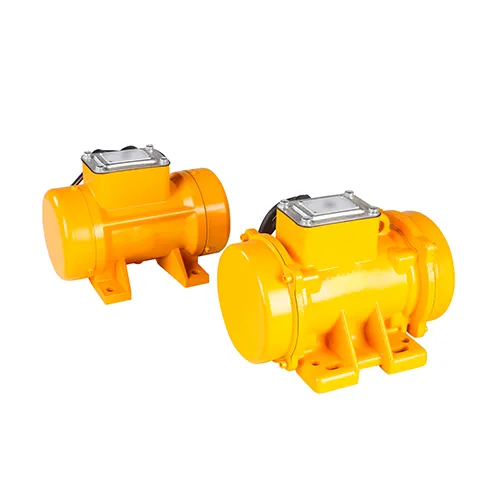Choosing the Right Concrete Vibrator for Your Project: A Comprehensive Guide
2024-08-30
Introduction
When it comes to concrete construction, achieving a strong, durable, and flawless finish is the ultimate goal. One of the key factors in achieving this is selecting the right concrete vibrator for the job. With various types of vibrators available, each designed for specific applications, understanding how to choose the best one for your project is essential. In this guide, we’ll walk you through the factors to consider when choosing a concrete vibrator and help you make an informed decision.

Factors to Consider When Choosing a Concrete Vibrator
1. Type of Project
The type and scale of your project are crucial in determining the appropriate concrete vibrator. For example, small residential projects like patios or driveways may only require a simple surface vibrator, while larger commercial projects with deep foundations and columns might need heavy-duty internal vibrators.
2. Concrete Thickness
The thickness of the concrete slab or structure plays a significant role in vibrator selection. Internal vibrators (poker vibrators) are effective for thick sections, as they can penetrate deep into the concrete. For thinner slabs or precast elements, external or formwork vibrators may be more suitable.
3. Concrete Mix
The composition of the concrete mix, including the size and type of aggregates, can influence vibrator choice. Stiffer mixes with larger aggregates may require more powerful vibrators to ensure proper compaction. On the other hand, more fluid mixes might need less intense vibration to avoid segregation.
4. Accessibility
Consider the accessibility of the area where the concrete will be poured. Tight spaces, confined areas, or complex formwork might limit the use of certain vibrators. In such cases, external or formwork vibrators might be more practical.
5. Power Source
Concrete vibrators can be powered by electricity, gasoline, or air. Electric vibrators are common and suitable for most projects, offering consistent power and ease of use. Gasoline-powered vibrators provide more mobility and are ideal for remote sites without access to electricity. Pneumatic vibrators are often used in industrial settings where compressed air is readily available.
Types of Concrete Vibrators and Their Applications
1. Internal (Poker) Vibrators
These vibrators are highly versatile and commonly used for various concrete applications, including foundations, columns, walls, and beams. They are ideal for thick concrete sections and provide efficient compaction.
- Best For: Large pours, deep sections, and areas requiring thorough compaction.
- Power Source: Electric, gasoline, or pneumatic.
2. External Vibrators
External vibrators are attached to the formwork and are used to vibrate the concrete from the outside. They are suitable for thin concrete sections, precast elements, and areas where internal vibrators are impractical.
- Best For: Precast concrete, thin walls, and complex shapes.
- Power Source: Electric or pneumatic.
3. Surface Vibrators (Screed Vibrators)
Surface vibrators are used on the surface of the concrete to achieve a smooth finish. They are perfect for large, flat surfaces like floors, slabs, and pavements.
- Best For: Large, flat surfaces requiring a smooth finish.
- Power Source: Electric or gasoline.
4. Formwork Vibrators
Formwork vibrators are external vibrators that attach directly to the formwork. They provide uniform vibration across the entire form, making them ideal for complex shapes and large-scale projects.
- Best For: Large projects, complex formwork, and ensuring uniform vibration.
- Power Source: Electric or pneumatic.
Tips for Using Concrete Vibrators
1. Proper Placement: When using internal vibrators, ensure the vibrating head is inserted vertically and at regular intervals. Overlapping each insertion point helps avoid air pockets and ensures thorough compaction.
2. Duration of Vibration: Over-vibration can cause segregation of the concrete mix, while under-vibration can leave air pockets. Typically, 5-15 seconds per insertion point is sufficient, depending on the mix and the vibrator's power.
3. Avoid Surface Vibrations: For thick pours, avoid only vibrating the surface. Ensure the vibrator reaches deep into the concrete to achieve full compaction.
Conclusion
Choosing the right concrete vibrator is crucial for the success of any concrete construction project. By considering factors such as project type, concrete thickness, mix composition, and accessibility, you can select the most suitable vibrator for the job. Understanding the different types of concrete vibrators and their applications will help you achieve high-quality, durable, and aesthetically pleasing concrete structures. Whether you're a contractor or a DIY enthusiast, investing in the right concrete vibrator will pay off in the long run with stronger, more reliable results.


